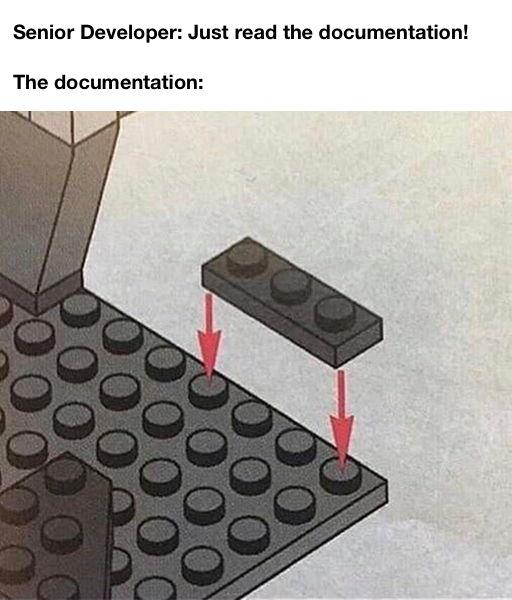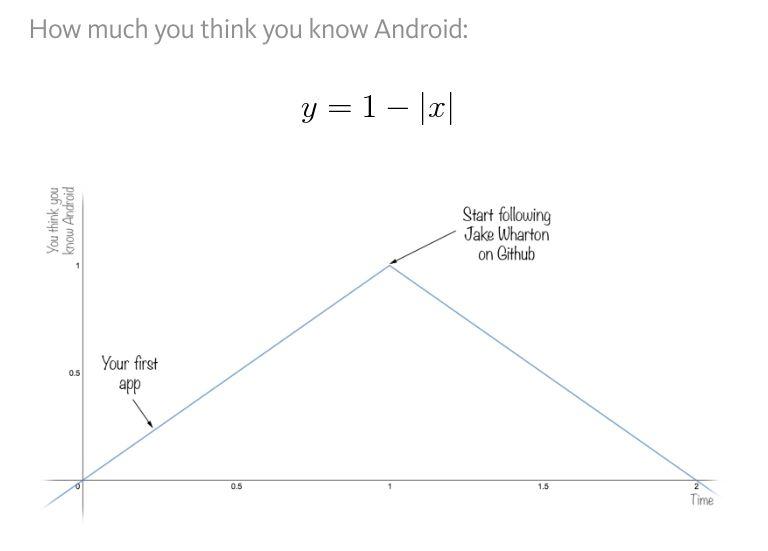Dependency Injection
Dmitry Melnikov
Dependency Injection
What is a dependency?
Class A => *uses* => Class BClient => *uses* => ServiceClass B is both a client and a service:
Class A => *uses* => Class B => *uses* => Class CHow do clients get references to services?
- instantiation
- static method call (factory)
- static global variable
- gets references "outside"
- reflection
First three are active dependencies resolution, the fourth one is a dependency injection (DI).
DI is a providing services to clients from "outside".
Dependency Injection
Usually DI has at least two meanings:
The act of providing (injecting) the required dependencies using one of the fundamental techniques: constructor, method or field injection (DI technique).
Dependency injection architecture pattern (DIAP).
Dependency Injection techniques
class Client(private val service1: Service1) { private var service2: Service2? = null fun setService2(service2: Service2) { this.service2 = service2 } lateinit var service3: Service3 fun doSmth() { service1.doSmth1() service2.doSmth2() service3.doSmth3() }}Dependency Injection techniques
Constructor injection
Pros:
- simple
- constructor signature reflects deps
- injected fields can be finalized (val)
- easy to mock services in unit tests
Cons:
- none
Dependency Injection techniques
Method injection
Pros:
- method signature reflects deps
- can happen after construction
Cons:
- not as explicit as a constructor injection
- can lead to implicit ordering requirements (temporal coupling)
Dependency Injection techniques
Field injection (property in Kotlin)
Pros:
- can happen after construction
Cons:
- all cons of the method injection
- not evident deps
Dependency Injection techniques
Constructor dependency injection technique looks best by far.
Prefer it to other techniques unless:
- no service instance at the moment of client instantiation (service locator)
- instantiation is out of your scope (e.g. Activity)
- limitations on constructor (e.g. Fragment)
Dependency Injection
What is it?
Most popular answer at the StackOverflow:
Dependency Injection is passing dependency to other objects or framework
It's incomplete. It's just a technique.
Dependency Injection
What is it?
Most popular answer at the StackOverflow:
Dependency Injection is passing dependency to other objects or framework
It's incomplete. It's just a technique.
Some more questions
Should such fields be injected?
val list: List<A> = ArrayList()Dependency Injection
What is it?
Most popular answer at the StackOverflow:
Dependency Injection is passing dependency to other objects or framework
It's incomplete. It's just a technique.
Some more questions
Should such fields be injected?
val list: List<A> = ArrayList()Is it enough to pass a ServiceLocator to a constructor?
Dependency Injection
What is it?
Most popular answer at the StackOverflow:
Dependency Injection is passing dependency to other objects or framework
It's incomplete. It's just a technique.
Some more questions
Should such fields be injected?
val list: List<A> = ArrayList()Is it enough to pass a ServiceLocator to a constructor?
Why DI frameworks exist if DI is just a passing deps into constructors?
Dependency Injection
What is it?
Most popular answer at the StackOverflow:
Dependency Injection is passing dependency to other objects or framework
It's incomplete. It's just a technique.
Some more questions
Should such fields be injected?
val list: List<A> = ArrayList()Is it enough to pass a ServiceLocator to a constructor?
Why DI frameworks exist if DI is just a passing deps into constructors?
If all clients get services from outside, where all of them are instantiated?
Dependency Injection architecture pattern
Segregates application logic into two sets of classes:
- Functional set
Contains classes that encapsulate core application functionality
- Construction set
Contains classes that resolve dependencies and instantiate objects from a functional set.
Each class in the app should be a part only of one of these sets.
Application +----------------+ +-----------------+|Construction set| | Functional Set || | | || Class1.. | <----> | Class1.. || ClassN | | ClassN |+----------------+ +-----------------+Segregation into these sets is a Separation of concerns.
Concerns of core app's functionality separated from concerns of creating and wiring.
Dependency Injection architecture pattern
DI — separation of concerns at the highest level of abstraction.
It's not about frameworks, annotations, or any other implementation details.
DI techniques vs DIAP
Different levels of abstraction (class vs application)
DI techniques vs DIAP
Different levels of abstraction (class vs application)
DI techniques - class level Single Responsibility Principle
DI techniques vs DIAP
Different levels of abstraction (class vs application)
DI techniques - class level Single Responsibility Principle
DIAP - application level Separation of Concerns
DI techniques vs DIAP
Different levels of abstraction (class vs application)
DI techniques - class level Single Responsibility Principle
DIAP - application level Separation of Concerns
DIAP implementations use DI techniques under the hood
DI techniques vs DIAP
Different levels of abstraction (class vs application)
DI techniques - class level Single Responsibility Principle
DIAP - application level Separation of Concerns
DIAP implementations use DI techniques under the hood
It's not enough to employ DI techniques to build DIAP
Dependency Injection sample
Myths:
- small applications don't need DI
- it doesn't worth investments
- DIAP is about frameworks
Pure Dependency Injection aka Manual Dependency Injection aka Vanilla Dependency Injection aka Poor Man's Dependency Injection
Service Locator ≠ DIAP
Dependency Injection sample
git clone git@github.com:melnikovdv/android-arch-2.gitgit checkout 2d28dd5Pure DI
Application +-----------------------------+ +-----------------+| Construction set | | Functional Set || | | || CompostitionRoot | <----> | Class1 || ActivityCompositionRoot | | ... || PresentationCompositionRoot | | ClassN || MvpViewFactory | | || Injector | | || ... | | |+-----------------------------+ +-----------------+Single entry point class for all dependencies
Dependency graph
Responsible for creating services and wiring them together
Law of Demeter
Principle of the least knowledge
Minimize class dependencies
Use of Law of Demeter makes fewer dependencies and more readable and maintainable code.
Objects vs Data Structures
Objects expose behavior.
Data structures expose data.
It's ok to create data structures in-place, but not ok to create objects.
Data structures are Kotlin data classes and Java records.
Dependency Injection benefits
Non-repetitive definition and exposure of the entire object graph.
You can keep your classes small and focused, but still easily compose them into arbitrary long chains to achieve complex functionality.
It enables Single Responsibility Principle and Reusability.
Testability: easier to write unit tests (test doubles, mocks).
Context isolation (for Android, activity leaks)
Additional Dependency Injection benefits
BlogItemMvpFragment dependency on BlogItemMvpViewImpl was eliminated in favor to BlogItemMvpView contract.
Sample profit: A/B testing with different ViewImpls. We can change View without changing Activity code.
It's OCP: an ability to modify functionality of a unit without changing its code.
Injector
Create Injector class with CompositionRoot to inject fields, not this.somethin manually
Injector
Create Injector class with CompositionRoot to inject fields, not this.somethin manually
Annotations and reflection sample to inject automatically
git clone git@github.com:melnikovdv/android-arch-2.gitgit checkout 33e7216Cons
Hardcoded in Injector which is bad
Performance could be bad either (every time inspecting hundreds of fields inherited from the Fragment is quite expensive)
Pure Dependency Injection cons
Pure DI is error-prone and forces you to write lots of code
Can be fixed with a DI framework
Dependency Injection Framework
External library
Provides a specific template for Construction Set implementation
Provides set of pre-defined conventions
Dagger 2
Dagger 2 is the most mature DI framework for now
History
Dagger 1 by Square, deprecated (reflection based)
Dagger 2 by Google
dagger.android package, deprecated
Dagger Hilt
Cons
Dagger is considered the most complex DI framework in Android world
Dependency Injection with Dagger 2
Uses Code generation
Cons
Poor docs
Lack of best practices
Too many features
Pros
No boilerplate code
Easier to refactor

Dependency Injection with Dagger 2 sample
git clone git@github.com:melnikovdv/android-arch-2.gitgit checkout dagger2Dependency Injection with Dagger 2
Components and modules (commit 43f27f4)
Components are interfaces annotated with @Component
Modules are classes annotated with @Module
Methods in modules with @Provides provide services
Provided services can be used as method arguments in other provider methods
Scopes are annotations annoteted with @Scope
Components that provide scoped services must be scoped
All clients get the same instance of a scoped service from the same instancce of a Component
Void methods with single argument defined on components generate injectors for the type of the argument
Client's non-private non-final properties (fields) annotated with @Inject designate injection targets
Dependency Injection with Dagger 2
Components dependencies (commit 43b8947)
Component inter-dependencies are specified as part of @Component annotation
Component B that depens on Component A has implicit access to all services exposed by Component A Services from A can be injected by B Serivces from A can be consumed inside modules of B
Dependency Injection with Dagger 2
Subcomponents (commit eaac8a7)
Subcomponents specified by @Subcomponent annotation
Parent componennt exposes factory method which returns Subcomponent
The argument of the factory method are Subcomponent's modules
Subcomponents get access to all services provided by parent (provided, not just exposed)
Dependency Injection with Dagger 2
Multi modules (commit 86dc54f)
Components can use more than one module
Modules of a single Component share the same object graph
Dagger automatically instantiates modules with no-arguments constructors
Dependency Injection with Dagger 2
Automatic injects (commit aca2e5b)
Dagger can automatically discover services having a public constructor annotated with @Inject annotation
Automatically discovered services can be scoped
@Binds annotation helps to resolve dependency types between interfaces and its implementations
Dependency Injection with Dagger 2
Static providers (commit a957b6d)
Dagger generates more performant code for static providers in Modules (use companion object or top-level object in Kotlin)
@Component.Builder (or @Subcomponent.Builder) designates inner builder interface for Component
@BindsInstance allows for injection of "bootstrapping dependencies" directly into Component builders
Dependency Injection with Dagger 2
Qualifiers (commit dc8351e)
Qualifiers are annotations classes annotated with @Qualifier
Qualifiers are part of the type (@Q1 Service and @Q2 Service are different types)
You can use the standard @Named(String) qualifier
Dependency Injection with Dagger 2
Providers (commit bb494cf)
Provider
Providers are basically "extensions" of composition roots
You use Providers when you need to perform "late injection" (factories)
Dependency Injection with Dagger 2
Assisted inject
class MyDataService @AssistedInject constructor( dataFetcher: DataFetcher, @Assisted config: Config) {}@AssistedFactoryinterface MyDataServiceFactory { fun create(config: Config): MyDataService}class MyApp { @Inject lateinit var serviceFactory: MyDataServiceFactory; fun setupService(config: Config): MyDataService { val service = serviceFactory.create(config) ... return service }}When you integrated Dagger 2

Who is that guy?

WWJD

Hilt
https://developer.android.com/training/dependency-injection/hilt-android
git clone git@github.com:melnikovdv/android-arch-2.gitgit checkout dagger2- Application (by using @HiltAndroidApp)
- ViewModel (by using @HiltViewModel)
- Activity
- Fragment
- View
- Service
- BroadcastReceiver
Hilt
Hilt
Android component Default bindings-----------------------------------------------------------------SingletonComponent ApplicationActivityRetainedComponent ApplicationViewModelComponent SavedStateHandleActivityComponent Application, ActivityFragmentComponent Application, Activity, FragmentViewComponent Application, Activity, ViewViewWithFragmentComponent Application, Activity, Fragment, ViewServiceComponent Application, Service